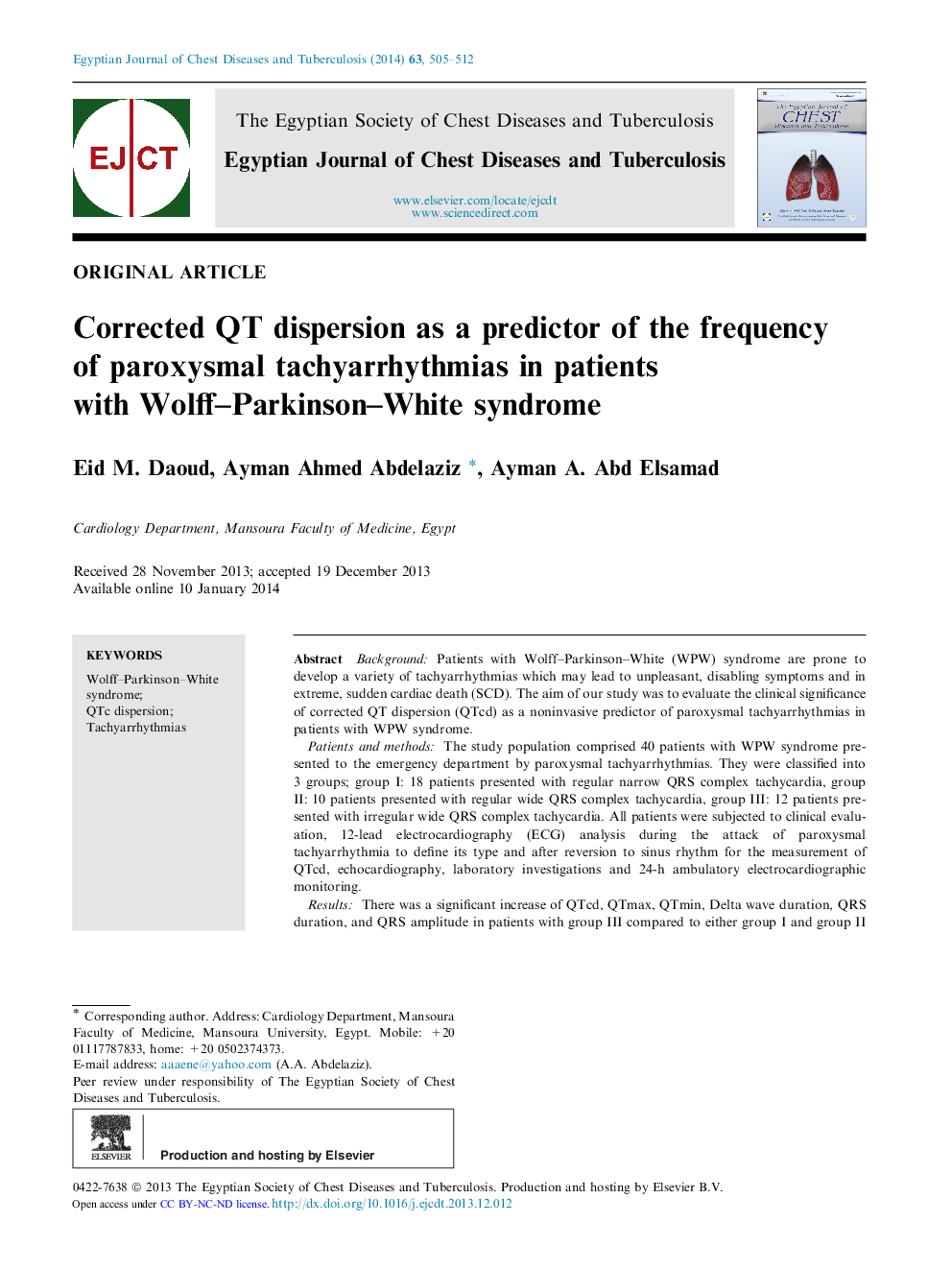| Article ID | Journal | Published Year | Pages | File Type |
|---|---|---|---|---|
| 3400366 | Egyptian Journal of Chest Diseases and Tuberculosis | 2014 | 8 Pages |
BackgroundPatients with Wolff–Parkinson–White (WPW) syndrome are prone to develop a variety of tachyarrhythmias which may lead to unpleasant, disabling symptoms and in extreme, sudden cardiac death (SCD). The aim of our study was to evaluate the clinical significance of corrected QT dispersion (QTcd) as a noninvasive predictor of paroxysmal tachyarrhythmias in patients with WPW syndrome.Patients and methodsThe study population comprised 40 patients with WPW syndrome presented to the emergency department by paroxysmal tachyarrhythmias. They were classified into 3 groups; group I: 18 patients presented with regular narrow QRS complex tachycardia, group II: 10 patients presented with regular wide QRS complex tachycardia, group III: 12 patients presented with irregular wide QRS complex tachycardia. All patients were subjected to clinical evaluation, 12-lead electrocardiography (ECG) analysis during the attack of paroxysmal tachyarrhythmia to define its type and after reversion to sinus rhythm for the measurement of QTcd, echocardiography, laboratory investigations and 24-h ambulatory electrocardiographic monitoring.ResultsThere was a significant increase of QTcd, QTmax, QTmin, Delta wave duration, QRS duration, and QRS amplitude in patients with group III compared to either group I and group II (P < 0.05). There was a significant increase in QTcd when compared to patients with WPW syndrome with frequent attacks of tachyarrhythmias with those with infrequent attacks (93.08 ± 14.68 versus 67.47 ± 7.03, P < 0.001).ConclusionCalculation of QTcd in patients with WPW syndrome presented with paroxysmal tachyarrhythmias is a simple noninvasive clinical test for risk stratification of those patients and hence detecting patients at higher risk for frequent and recurrent tachyarrhythmias.
